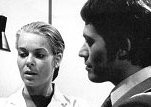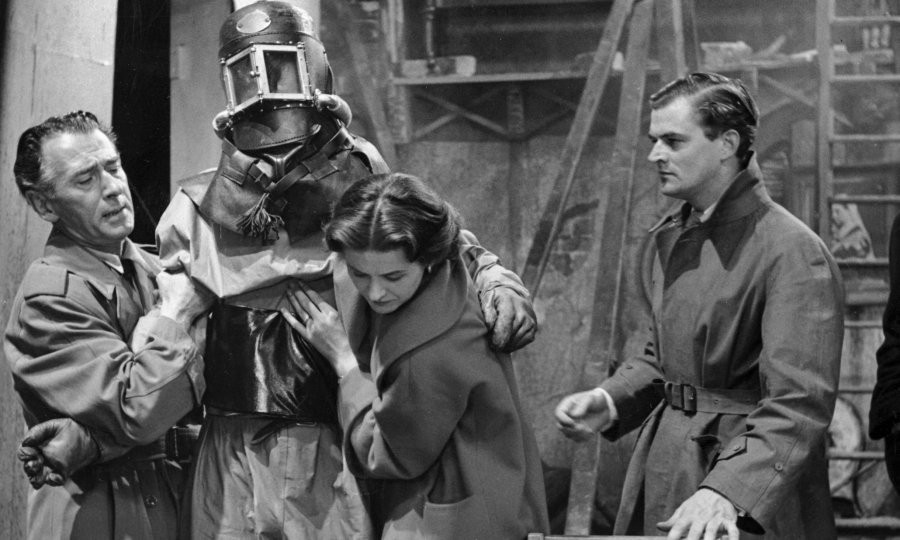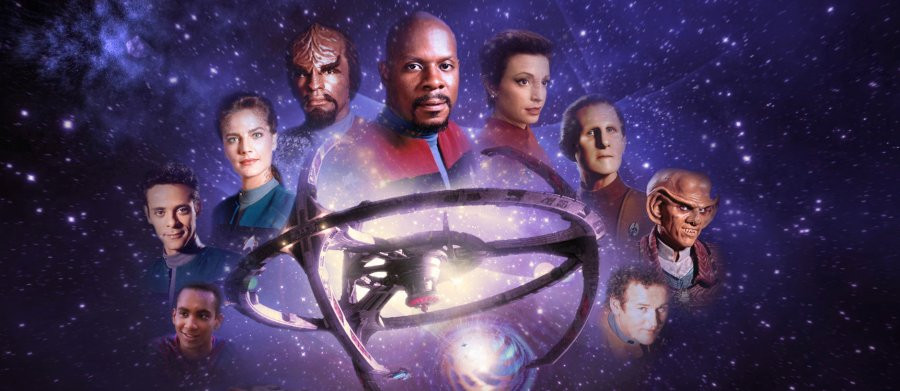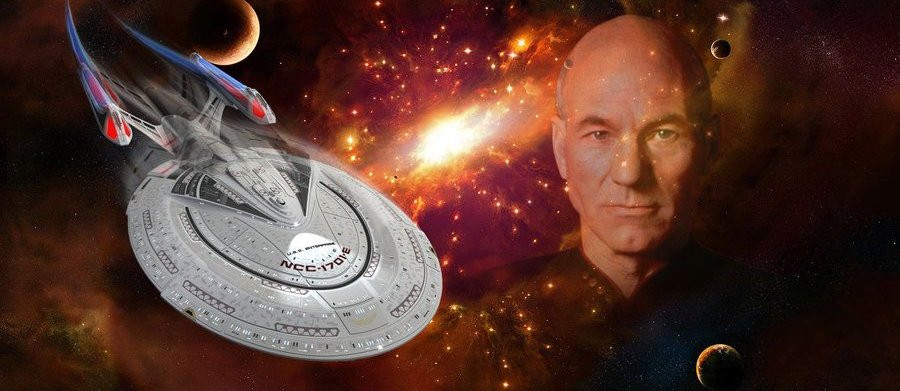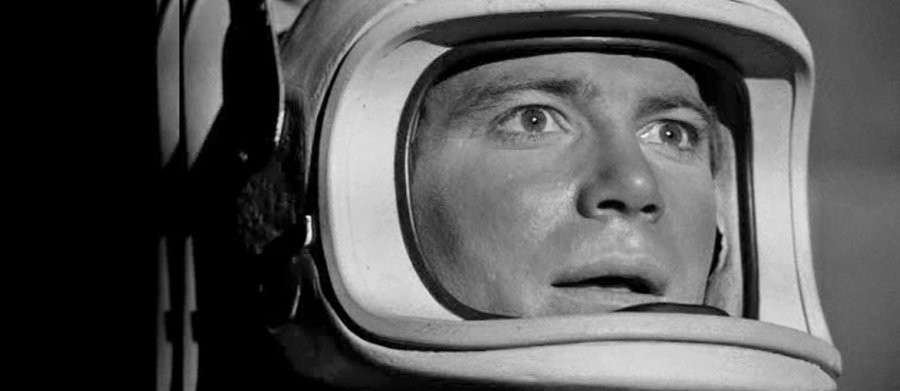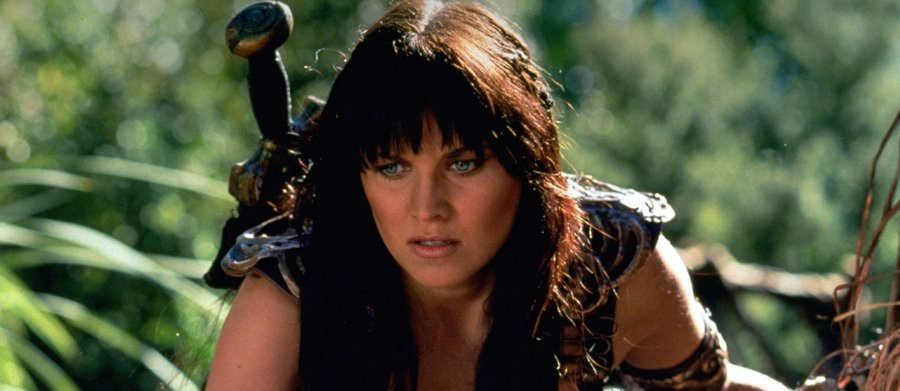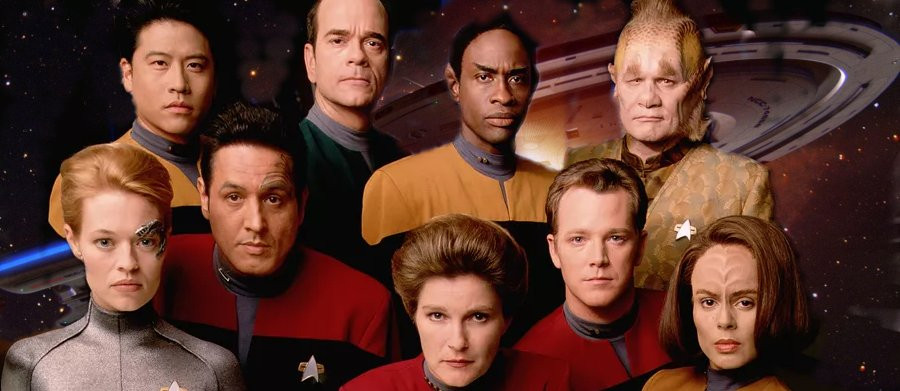
Star Trek: Voyager
1995 - United StatesReview: Daniel Tessier
Voyager was a series that had so much potential. After the conclusion of the hugely popular Star Trek: The Next Generation, there was a clear place for another Star Trek series to continue the franchise. Since the new series would run alongside the space station set Star Trek: Deep Space Nine for much of its tenure, another ship-based series was the order of the day. Unlike The Next Generation, though, the new series would see a back-to-basics approach, with a smaller starship, less powerful than the mighty Enterprise, lost far from home. The crew of the ship would be forced to join with the Maquis – anti-Starfleet rebels established in the sister series – and would be cut off from Starfleet Command, forced to rely on their wits and ingenuity as their resources dwindled.
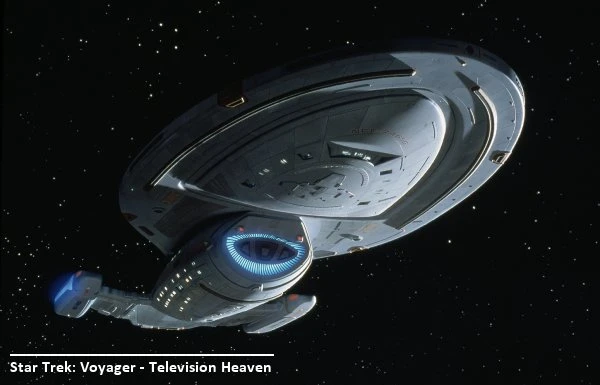
Sadly, the final product never quite lived up to the premise. The feature-length opening episode, “Caretaker,” showed a series with a great deal of promise. It saw both the USS Voyager and a Maquis fighter dragged across space to the Delta Quadrant, the far edge of the galaxy. Finding themselves in a desperate situation, with half their crews dead and other crewmen abducted by a powerful alien being, the Starfleet officers and Maquis rebels are forced to join forces. With an innocent race in peril, they are forced to destroy the technology that brought them to the Delta Quadrant, and the Maquis ship along with it, stranding the survivors and leaving Voyager with a 75-year journey home threw uncharted and deadly territory.
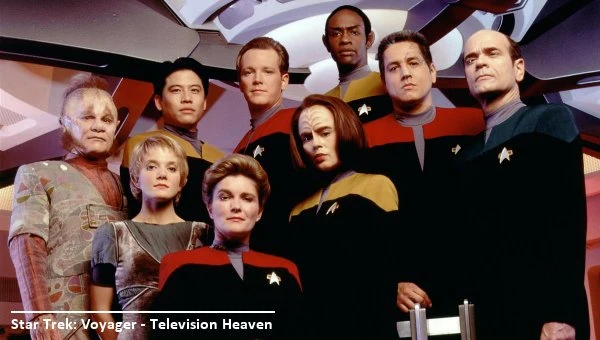
The series was promised as a drama rich on character and conflict, something that Deep Space Nine did so well. The promised conflict between the Starfleet and Maquis crews never lived up to its promise, though. The first clue that the two groups would get along far too well was when the Maquis put on Starfleet uniforms and took on official ranks at the end of the first episode. The conflict simmered through the first couple of seasons, with both Maquis and Starfleet officers pushing back against their circumstances, but on the whole, the crew was largely unified and the majority of the conflict came from outside.
The characters themselves, for the most part, failed to have the impact of their fellow officers in previous iterations of Star Trek. Captain Kathryn Janeway commanded Voyager, a long-overdue female lead for a Star Trek series. The casting process for Janeway was long and difficult, but eventually Genevieve Bujold (Festival, Dead Ringers) was eventually cast as Captain Nicole Janeway, a thoughtful scientist on her first command. After a day's shooting, Bujold quit, frustrated with her simplistic character. The rewritten part was given to Kate Mulgrew (Mayor of the People, and latterly Orange is the New Black). While the character was still a scientist, Mulgrew's Janeway was a rule-bound officer who was obsessed with three things: getting the crew home, maintaining Starfleet's Prime Directive and drinking coffee. Janeway was frustratingly inconsistent in her writing and often hypocritical in her actions, making her a quite infuriating character.
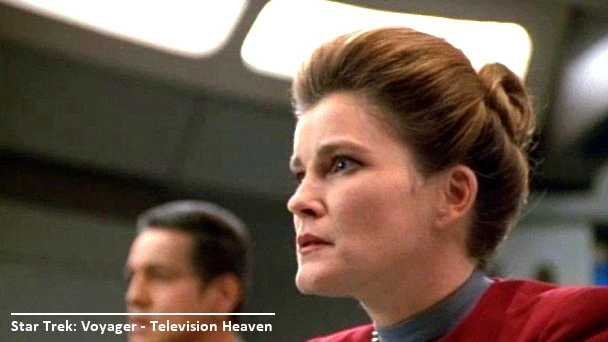
Her opposite on the Maquis ship was Chakotay, a former Starfleet officer who joined the rebels when his colony was handed over to the hostile Cardassians. Played by Robert Beltran (Big Love, Models Inc.), Chakotay was the first major Native American character in the franchise. His actual background, though, was vague in the extreme, with his tribe's origin wandering across the Americas depending on the episode, and the character was saddled with a lot of cod-Indian spirituality clichés. A bit of a bruiser, Chakotay was at his best when he got to roll his sleeves up, but for the most part he followed Janeway round like a puppy. A will-they/won't-they romantic subplot petered out in the second season; the occasions when the captain and her new first officer were at loggerheads were more interesting. For the most part, though, Chakotay was incredibly by-the-book for a supposed rebel.
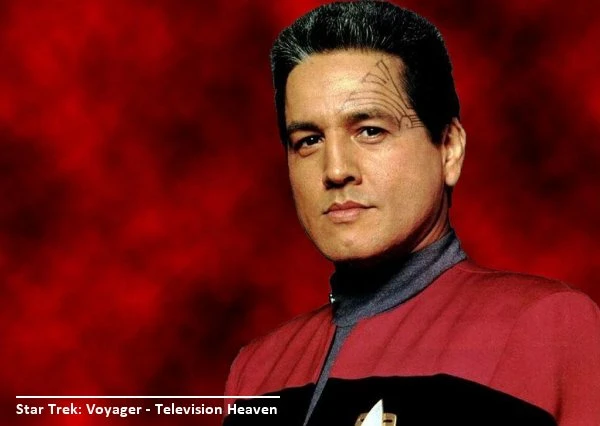
Tuvok (Tim Russ: The Highwayman, The People Next Door) was Janeway's closest friend, a Vulcan who had been placed undercover on Chakotay's crew. Tuvok rarely got to do much except do a poor job as Chief of Security and look pained by the more emotional crew members actions, but Russ excelled on the rare stories where Tuvok's emotional state became compromised. There was an undercurrent of repressed aggression to the character, which made for a fascinating side to it, but was only rarely explored.
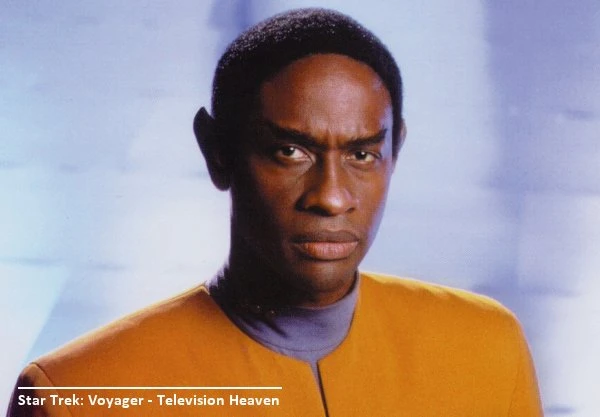
Robert Duncan McNeill (Going to Extremes, Homefront) played Tom Paris, a former Starfleet officer kicked out of the service for causing the death of fellow officers and failing to come forward. McNeill had appeared in “The First Duty,” an acclaimed episode of The Next Generation, as Cadet Nick Locarno, an almost identical character. The initial intention was that McNeill would reprise the role of Locarno, but the showrunners decided that his crime was a little too severe, so created a watered-down version of the character. This is a perfect example of how the creative team pulled their punches on a series that could have been something grittier. As it was, Paris, the ship's dashing pilot, was one of the more likeable and troubled characters, with a fractious relationship with Chakotay, but never quite the scoundrel he was conceived as.
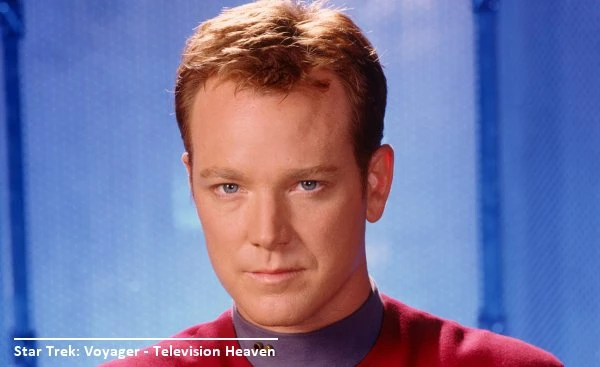
Roxann Dawson (The Round Table) was B'Elanna Torres, a half-human, half-Klingon engineer with a close relationship with Chakotay. Early on, her main character trait was that she got angry a lot, but she received some reasonable development and was one of the more emotionally believable characters on the series. Torres and Paris developed a romantic relationship as the series progressed, eventually becoming married and having a daughter in the series' final episode.
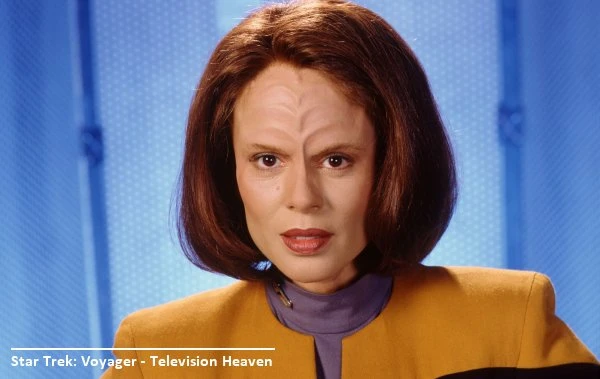
Harry Kim (Garrett Wang) completed the bridge crew. A fresh-faced young ensign, Kim's main character trait was his desperate desire to please. There was a fun running joke about Kim always falling for impossible-to-get women (the wrong twin, a hologram, a xenophobic alien), but otherwise his main relationships were his friendship with Paris and surrogate mother-son relationship with Janeway. It's hard not to feel a little sorry for Kim, who remained at the lowest rank through the whole series.
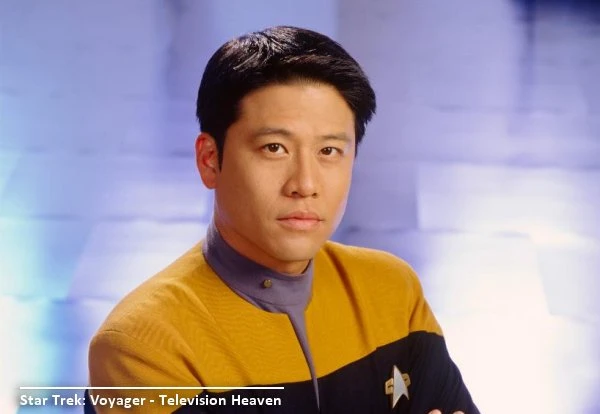
The standout character was the Doctor, played by Robert Picardo (L.A. Law, Savage Dragon, Innerspace). He was easily the most interesting character and most talented actor of the original main cast. The Doctor (who never managed to decide on a name) was an Emergency Medical Hologram, a fascinating concept created for the series. With the entire medical staff killed in Voyager's abduction, the Doctor was forced to remain active for the full journey of the ship, evolving from a basic short-term tool to a fully-fledged member of the crew. Becoming cultured, romantic and not a little eccentric, the crabby Doctor had to fight for the respect of his colleagues early on, but from the beginning was the most watchable character. The question of the Doctor's personhood was an ongoing and intriguing discussion on the series.
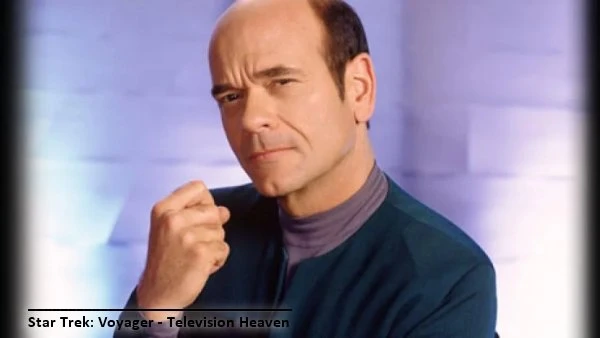
As well as the Maquis and Starfleet characters, two aliens joined the ship. Neelix and Kes, both natives of the Delta Quadrant, were an unlikely couple to begin with. Neelix, conceived as a piratical character, was quite fun in the first episode, but rapidly became annoying to most viewers. While Ethan Phillips (Werewolf, Boston Legal) was very good when given deeper material to work with, the majority of the time Neelix was the wacky, funny character. He was, at least early on, quite untrustworthy, and there was an unfortunate abusive undertone to his relationship with Kes. Played by Jennifer Lien (Phenom, Men in Black: The Series), Kes was a member of an elfin race of psychics. Only a year old at the start of the series, she could expect to live a mere nine years before succumbing to old age. Kes had some romantic tension with Paris and an effective mentor-student relationship with the Doctor, but writers struggled to find ways to use her character.
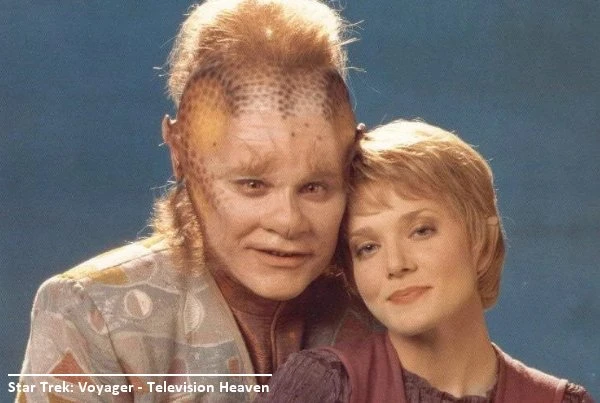
Unlike its predecessors, Voyager was guaranteed a seven-year run, and was chosen as a flagship title for Paramount's new network, UPN. With its future so secure, the series never had to fight for its airtime, and this perhaps explains the lacklustre nature of so many of the earlier scripts. The main issue, though, was the characters. None, apart from the Doctor, were terribly interesting, and not people you'd choose to spend seven years with. Guest characters were often more interesting, and the series had a particular knack for guest and recurring villains. Most effective was Seska, another member of Chakotay's crew that turned out to be a spy (was anyone actually working for him?) Played with insidious charm by Martha Hackett (Hill Street Blues, Days of Our Lives), Seska provided an ongoing threat for the first two seasons when she allied with alien brutes the Kazon, who desired Voyager's technology.
In spite of some unpromising characters, the first two seasons were more character-based than what followed, with later seasons focusing more on high-concept science fiction stories. This was, in all seasons, Voyager's strongest suit, with the crew facing some ingenious and odd situations. Unfortunately, this went hand-in-hand with a reliance on technobabble. For a series that was supposed to go back to basics, Voyager's dialogue was swamped with nonsensical pseudoscience, and problems were all-too-frequently solved with a command to emit some beam or resonate some frequency. There was rarely any real sense that the ship was lost and facing dwindling resources. Fans quickly caught onto the fact that the ship's supposedly limited and valuable supply of shuttles and torpedoes was seemingly inexhaustible. After dozens of deaths in the opening episode left the ship in dire straits, Voyager seemed to have a crew complement as unwavering as its arsenal. In spite of the lack of power and fuel in early stories, the holodeck was a free-for-all, justified by some silliness about it being on a different power network.
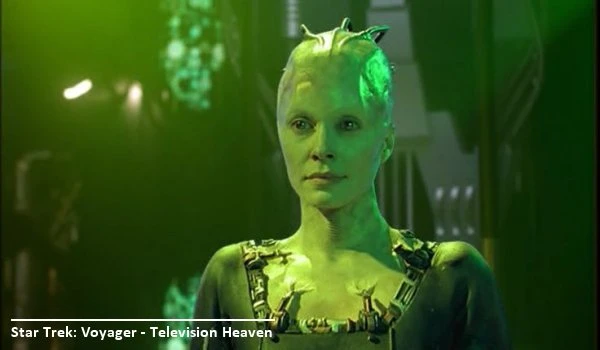
While the Delta Quadrant (contrasted to Earth's own Alpha Quadrant) was envisioned as the great unknown, filled with new alien races, familiar faces abounded. As well as a Vulcan, Bajorans and half a Klingon on the crew, Cardassians, Romulans, Ferengi and John de Lancie's Q all appeared during the first two seasons. That's not to say there were no new aliens. While the Kazon often came across as cut-price Klingons, the tragic, organ-snatching Vidiians were a truly chilling threat. One-off aliens-of-the-week kept things interesting, and in later seasons, new recurring foes included the pollution-themed Malons, the bureaucratic pirates called the Hierarchy and the Hirogen – Predator-like alien hunters. The third season saw the series move further along the high-concept science fiction route and leave some of the initial ongoing threats behind. The finale of season three, “Scorpion,” brought in the big guns. The Borg, the terrifying adversary from The Next Generation, became new recurring enemies for Voyager, only this time, the ship was on the Borg's own home turf. While the Borg's appearance in “Scorpion” was primarily to show how tough new enemies Species 8472 were, it was the Borg who turned up again and again throughout the series. While Borg episodes were among the most popular in the series and had a positive effect on the ratings, continually meeting them had a negative effect as well. Much like the Daleks on Doctor Who, the Borg became among the most defeated villains in the galaxy and lost their teeth as a result.
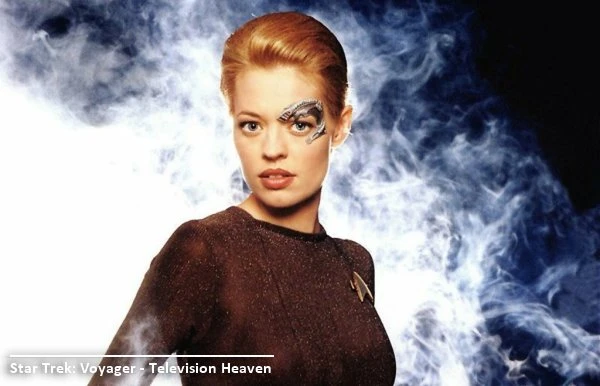
Season four brought in a major change for the series. “Scorpion” acted as a second pilot, writing out Kes and introducing a new regular character. Played by the truly talented Jeri Ryan (Dark Skies, Boston Public), Seven of Nine was a Borg drone who was rescued by the crew of Voyager. Forced to readjust to knowing her own mind outside of the Borg's computerised collective consciousness. Seven rapidly became a firm favourite of viewers, with many of the strongest episodes revolving around her. Of course, the sex appeal Jeri Ryan added, strutting around the ship in a skin-tight catsuit, didn't hurt either. Seven had strong relationships with the Doctor and the Captain and underwent genuine development. The introduction of the Borg Queen (Susanna Thompson in most appearances, with Alice Krige reprising her role from Star Trek: First Contact) as a recurring guest villain created a fascinating all-female power triangle.
Of course, Voyager eventually returned to the Alpha Quadrant. There was never really any question that the crew wouldn't make it, and after several shortcuts, the time-twisting finale “Endgame” saw the ship jump across the galaxy after a final confrontation with the Borg. While Voyager never really reached the heights of The Next Generation or Deep Space Nine's popularity, it's a watchable series with some excellent ideas. The first Star Trek series to rely on computer-generated imagery for its ships and space phenomena, it never looked anything less than gorgeous, and it boasted perhaps the most beautiful theme tune in the franchise. One thing it did especially well was feature-length “event” episodes, usually during the “sweeps” period on US television, which had high budgets and ratings to match. The series' height was in its middle seasons, with a better hit-rate in the episodes, but there are gems throughout. Season's two's “Future's End” and its later sequel “Relativity” are brilliant time travel stories. In season four, “Living Witness” provides a different look at the series, from a historical standpoint centuries in the future, while “Message in a Bottle” is a hilarious romp. Season three's “Distant Origin,” an alien's-point-of-view story with an ingenious central concept, is one of the strongest episodes in the Star Trek canon.
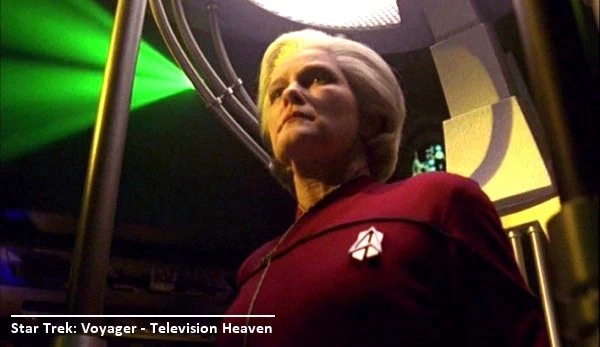
Nonetheless, these standout episodes sit amongst a lot of rather mediocre filler – rarely terrible, but often little more than mildly diverting. The feeling of a missed opportunity is impossible to escape. The middle of season four saw the event story “Year of Hell,” a relentless assault on Voyager that saw the crew driven to desperate measures to survive against a relentless foe. The original conception was that this would have been the entire fourth season's story arc, but again, it was pulled back to a lesser version. Even a full season of “hell” was a lesser version of Voyager, though. The entire series should have been as brutal and desperate. Producer and occasional writer Ronald D. Moore went from Voyager to co-create the revived Battlestar Galactica, and that series perhaps shows best the sort of show Voyager could have been.
Voyager has its die-hard fans, of course, and even though it will never be as well-regarded as its sister series, it has its own legacy. As well as a “relaunch” novel line pursuing the starship Voyager's further missions and a major influence on the Star Trek Online computer game phenomenon, characters have made appearances in later productions. Mulgrew appeared as Admiral Janeway in the film Star Trek Nemesis, while the recent first season Star Trek: Picard saw Jeri Ryan return as the ever-popular Seven of Nine. As the twenty-fourth century continues, more of Voyager's characters and concepts will no doubt appear.
Daniel Tessier
Dan describes himself as a geek. Skinny white guy. Older than he looks. Younger than he feels. Reads, watches, plays and writes. Has been compared to the third, fourth, fifth, sixth, seventh, eighth, tenth, eleventh and twelfth Doctors, and the Dream Lord. Plus Dr. Smith from 'Lost in Space.' He has also had a short story published in Master Pieces: Misadventures in Space and Time a charity anthology about the renegade Time Lord.
Dan's web page can be here: Immaterial
Seen this show? How do you rate it?
Seen this show? How do you rate it?
Published on August 6th, 2020. Written by Daniel Tessier for Television Heaven.


